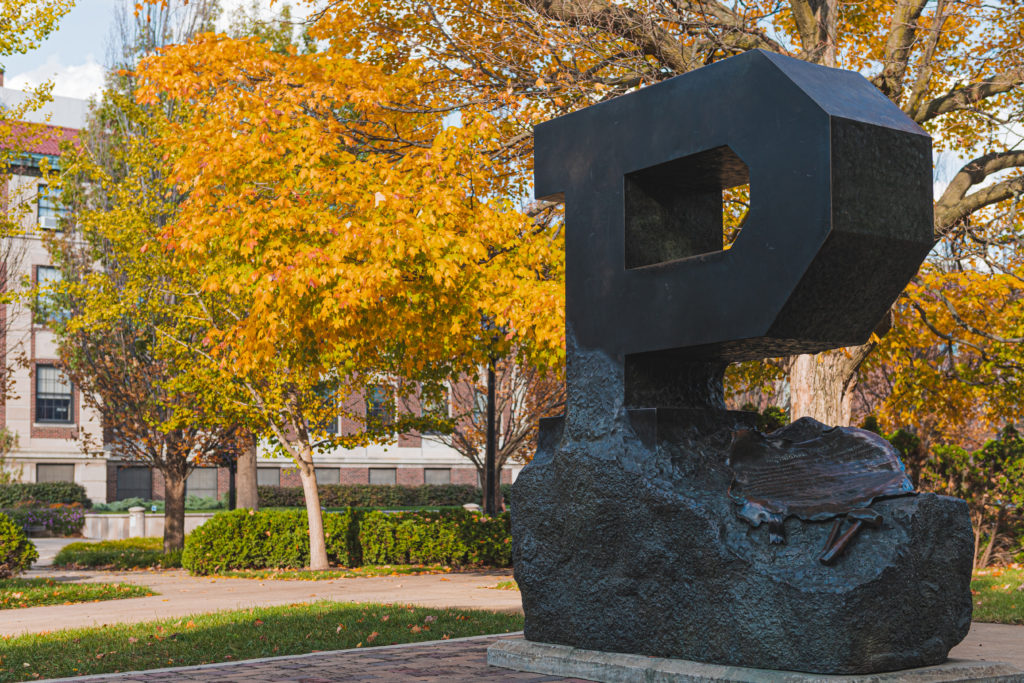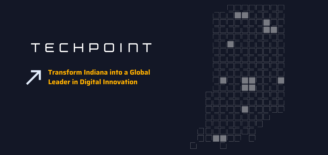How Purdue is investing in connectivity innovation for the future
More than 63,000 faculty, staff and students rely on Purdue’s wireless network for teaching, learning, research and entertainment annually. On the West Lafayette campus alone, there are approximately 100,000 unique devices connected to the wireless network daily, with 4.6 million logins to the wireless system each day.
Purdue Information Technology (Purdue IT) is continuously innovating to ensure its network meets its users’ needs, most recently with the support of the Purdue Board of Trustees and a five-year, $2.6 million project to upgrade the wireless network for Purdue’s West Lafayette, Northwest and Fort Wayne campuses. In total, 12,750 wireless access points will be installed across the three campuses, helping to modernize and improve wireless connectivity.
During phase one of the project, technicians replaced access points throughout university residences. The project is on pace to finish a month ahead of schedule. Once complete, work will continue to upgrade wireless access points in academic buildings as well.
To further improve connectivity in the university residences, Purdue will utilize Splash Access to provide students with a “home away from home” wireless connection. Residential students will have the ability to login to a guest SSID to manage and onboard their own devices, including phones, laptops and gaming systems.
Also in 2022, Purdue IT launched a new chatbot feature designed to help university students, faculty and staff quickly resolve passcode issues with Purdue’s BoilerKey two-factor authentication. Dubbed BoilerBot, the automated process helps resolve passcode issues more quickly, which reduces the wait time for others contacting the IT Customer Service Center for more complex needs. Within four months of its launch, BoilerBot effectively resolved 11,485 issues. Multiply that by the average call time of 10 minutes, that equates to 1,914 hours not spent on the phone by customers and IT representatives.
This is just the first of several Robotic Process Automation services in progress at Purdue. Other functions underway include expansion of the BoilerBot to help customers reset their career account passwords, as well as chatbots to automate invoice notifications for business operations.
With delivering excellence at scale in mind, Purdue IT continues to integrate all IT areas into the central organization, intending to strengthen and expand capabilities aligning with the best interests of the colleges, regional campuses and the university system at large. A unified Purdue IT provides a service that is secure, efficient and reliable with an overarching vision to empower Purdue students, faculty and staff with the technology to make giant leaps to advance knowledge, impact the state of Indiana and make a better world.
This work is guided by three pillars –people, processes and technology. By developing the skills and talent of its workforce, refining processes toward operational excellence and delivering the right technologies to solve the right problems at the right time, Purdue aims to become a model for information services in support of academic excellence.
Examples of technology investments include a new service management system, upgrades to security infrastructure and the development of a more-secure, easier-to-use two-factor authentication system.
In terms of people and processes, Purdue IT invested in IT Infrastructure Library 4 training, which provides staff a common language and framework for delivering IT as a service. More than 97 percent of Purdue IT staff have already completed the training, with senior staff pursuing certification.
“The big picture is looking not at what we do today, but where we want to be in the future,” said Purdue Vice President for Information Technology and CIO Ian Hyatt. “Our goal is to be a world class IT organization. What steps do we need to take to get there, how do we improve the student experience, how do we add value to academics, how can we support research at all levels? Those are the questions that drive us to get better.”

Pandemic Pivot, not Panic
Like everyone, the pandemic in 2020 challenged Purdue IT to meet the needs of the campus community, but Purdue was ahead of the game due to The Envision Center, which launched in 2004 and uses the latest technology to create virtual reality and data visualization tools for research and educational use. By the time pandemic restrictions were ordered, the center already had collaborated with faculty in 36 different academic departments to develop several applications that give students hands-on experience. Examples include the first virtual cleanroom for training pharmacy students, an insect dissection virtual reality application and a virtual environment for visualizing supernova remnants in three dimensions.
Purdue IT increased its virtual Private Network (VPN) service to accommodate 200,000 connections. Although many classes could easily pivot to online, courses that previously relied on face-to-face interaction and hands-on, laboratory-based instruction had to be accommodated.
Another pivot example is Daisuke Kihara, a professor of biological sciences and computer science, who used Purdue’s supercomputers to develop computational models of the proteins in the novel coronavirus SARS-CoV-2 in attempt to assist in the development of drugs to treat COVID-19.
Purdue IT currently operates 10 world-class computation clusters. Kihara used Gilbreth, Purdue’s powerful GPU cluster optimized for machine learning applications, to compare the protein’s amino acid sequence to sequences in a database of known proteins from other viruses and predict which pairs of amino acids are interacting or not. He then used the Brown and Halstead clusters to run the simulation structure model and build a three-dimensional model of the protein.
In 2021, Purdue IT launched Anvil, a powerful new supercomputer that provides advanced computing capabilities to support a wide range of computational and data-intensive research spanning from traditional high-performance computing to modern artificial intelligence applications. Anvil, which is funded by a $10 million award from the National Science Foundation, significantly increases the capacity available to the NSF’s Advanced Cyberinfrastructure Coordination Ecosystem: Services & Support (ACCESS) program, which serves tens of thousands of researchers across the United States.
When campus reopened, institutional data from wireless access points aided in contract tracing. Meanwhile, Purdue IT deployed tents equipped with Wi-Fi access points throughout campus greenspaces to increase outdoor meeting spaces for students to gather and study safely.
Purdue IT remains an agile, forward-thinking organization, always ready for the next challenge and innovation.





